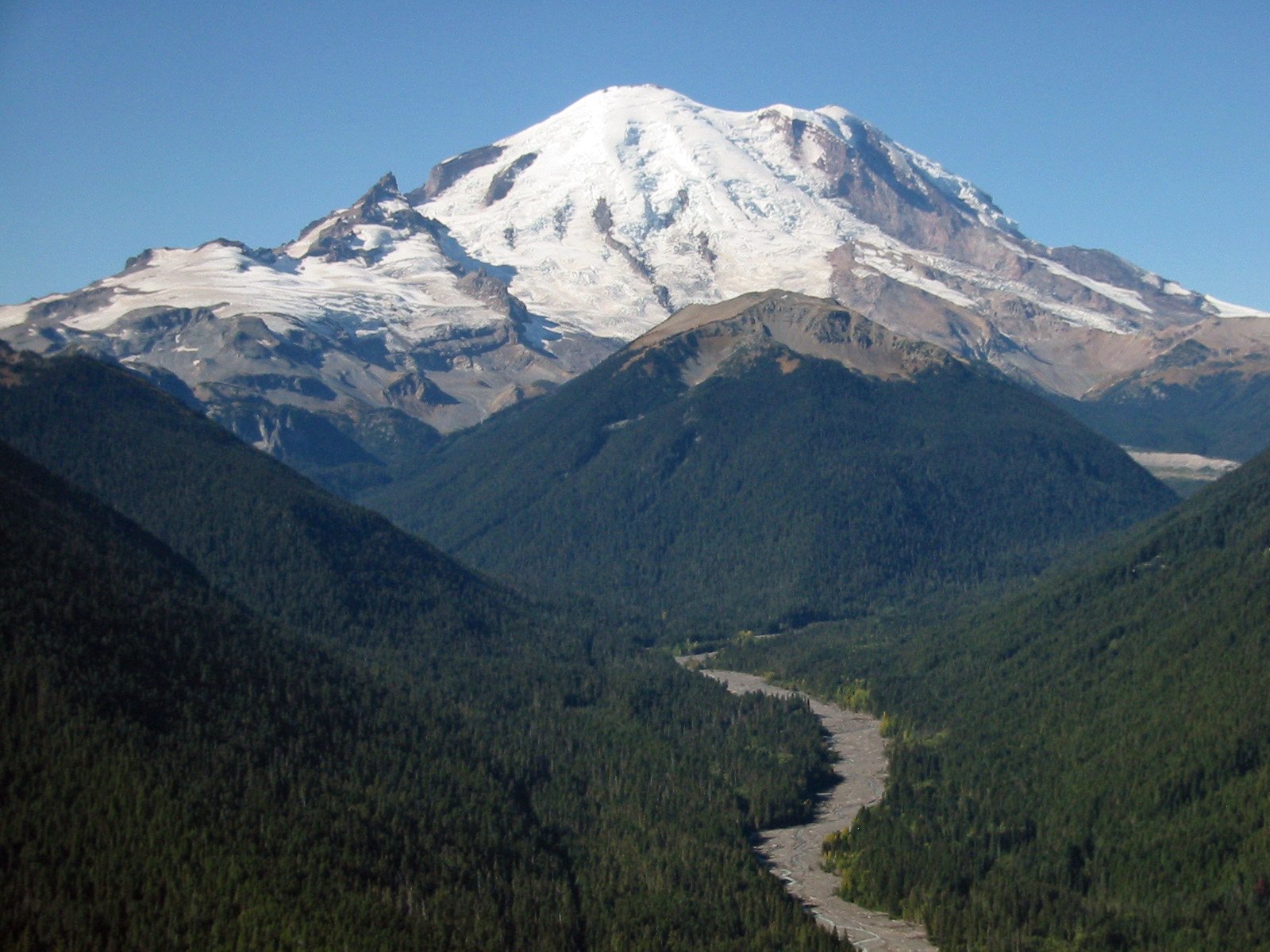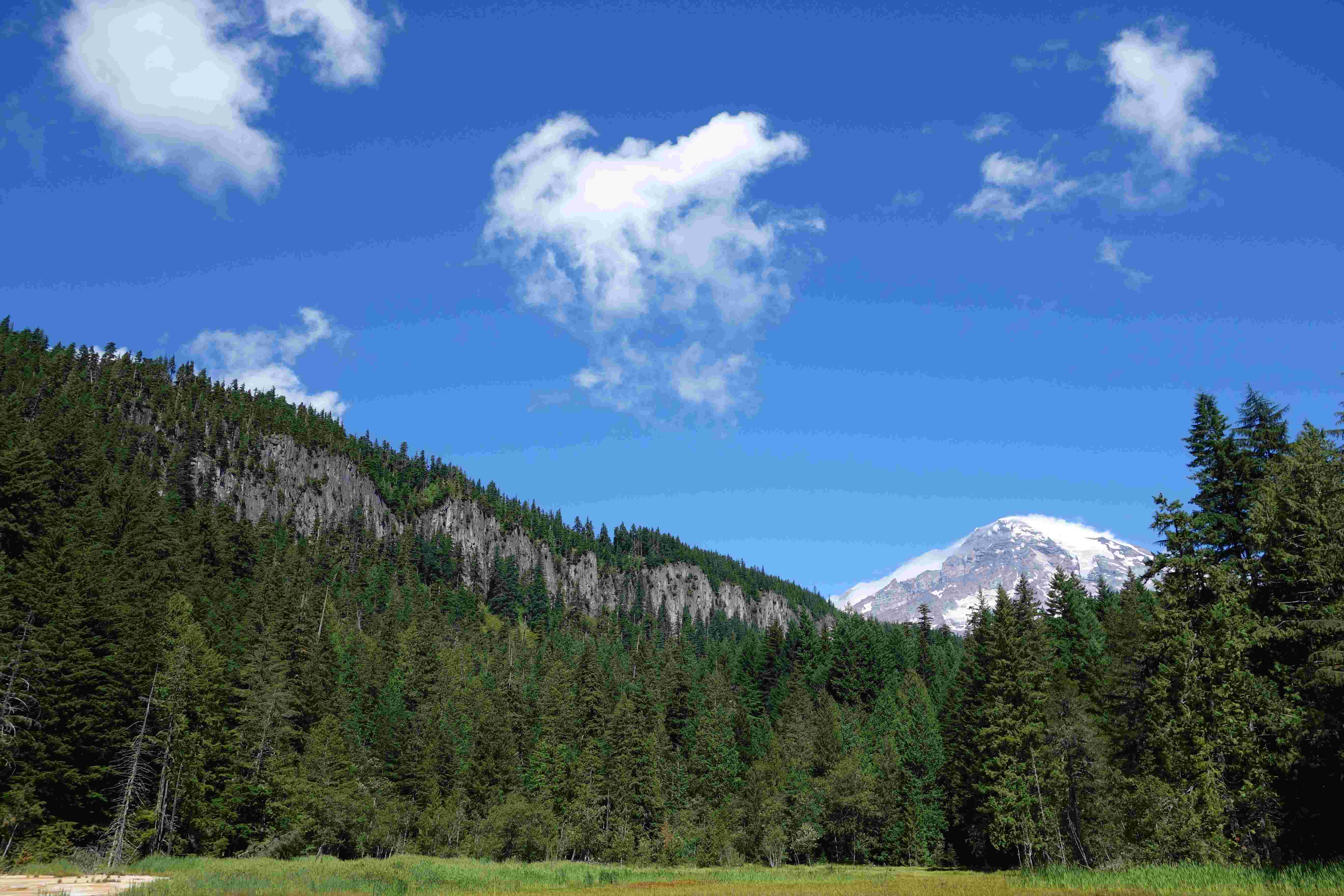The Skyline Trail at Mount Rainier is a spectacular 6.2-mile loop that offers breathtaking views of the mountain, subalpine meadows, and diverse ecosystems. While it doesn’t actually connect to Sunrise Rim, this trail is often mistaken for one that does. Starting at Paradise Visitor Center, it climbs to an elevation of 7,100 feet, providing hikers with panoramic vistas of the Cascade Range and Mount Rainier’s glaciers. The trail is known for its challenging terrain, wildflower displays, and potential wildlife sightings, making it a popular choice for experienced hikers visiting Mount Rainier National Park.
What is the Total Distance and Elevation Change of the Skyline Trail?

The Skyline Trail at Mount Rainier is a challenging but rewarding hike. Here are the key statistics:
- Total Distance: 6.2 miles (loop trail)
- Elevation Gain: Approximately 1,900 feet
- Starting Elevation: 5,400 feet (at Paradise Visitor Center)
- Highest Point: 7,100 feet
It’s important to note that while the trail is often referred to as connecting to Sunrise Rim, it actually does not. The confusion may arise from the fact that both are popular trails within Mount Rainier National Park.
What Are the Current Trail Conditions?

Trail conditions on the Skyline Trail can vary significantly depending on the time of year:
- Early Season (May-June):
- Snow and ice often present
- Specialized equipment may be necessary
-
Higher risk of avalanches
-
Peak Season (July-August):
- Generally snow-free
- Wildflowers in bloom
-
Busiest time on the trail
-
Late Season (September-October):
- Cooler temperatures
- Potential for early snow
- Fall colors in the meadows
| Season | Trail Condition | Precautions |
|---|---|---|
| Early | Snow and ice | Crampons, ice axe recommended |
| Peak | Clear, busy | Sun protection, plenty of water |
| Late | Variable | Warm layers, check weather forecast |
Hikers should always check the latest trail reports from the National Park Service before setting out.
When is the Best Time of Year to Hike the Skyline Trail?
The optimal time to hike the Skyline Trail is typically from mid-July to early September. This period offers several advantages:
- Trail is generally snow-free
- Wildflowers are in full bloom
- Weather is more stable and predictable
- Longer daylight hours for hiking
However, this is also the busiest time on the trail. For those seeking a quieter experience, consider these alternatives:
- Early Morning Hikes: Start before sunrise to avoid crowds and enjoy beautiful morning light.
- Weekday Visits: Trails are generally less crowded on weekdays.
- Late Season Hikes: September can offer pleasant conditions with fewer people.
What Amenities, Facilities, and Parking are Available?
Hikers planning to tackle the Skyline Trail should be aware of the following amenities and requirements:
Parking
- Available at Paradise Visitor Center
- Timed entry permit required from May 24 to September 2, 2024
- Arrive early, as parking fills up quickly during peak season
Facilities
- Restrooms at the trailhead and midway point
- Water fountains at Paradise Visitor Center (fill up before starting)
- No facilities on the trail itself
Costs and Permits
- National Park Pass or $30 entrance fee required
- Timed entry reservation system in place during peak season
- No additional permit needed for day hiking
Safety Considerations
- Carry the Ten Essentials
- Inform someone of your hiking plans
- Be prepared for rapid weather changes
How Difficult is the Skyline Trail?
The Skyline Trail is considered moderately difficult to strenuous. Factors contributing to its difficulty include:
- Elevation Gain: Nearly 2,000 feet of climbing
- Altitude: Hiking at elevations above 5,000 feet can be challenging
- Trail Conditions: Varied terrain including paved paths, dirt trails, and potential snow crossings
- Weather: Rapidly changing conditions can increase difficulty
Hikers should be in good physical condition and prepared for a full day of hiking.
What Wildlife and Plants Can Be Seen on the Skyline Trail?
The Skyline Trail offers diverse ecosystems and opportunities for wildlife viewing:
Flora
- Subalpine wildflowers (July-August)
- Mountain hemlock and subalpine fir trees
- Alpine meadows with hardy plants adapted to high elevations
Fauna
- Marmots and pikas in rocky areas
- Black bears (from a distance)
- Mountain goats on higher slopes
- Various bird species including Clark’s Nutcracker
Always observe wildlife from a safe distance and never feed animals in the park.
What Are the Photography Opportunities on the Skyline Trail?
The Skyline Trail offers numerous photographic opportunities:
- Panoramic Vistas: Sweeping views of the Cascade Range
- Glaciers: Close-up views of Mount Rainier’s glaciers
- Wildflowers: Colorful meadows in peak season
- Wildlife: Opportunities for wildlife photography (with proper distance)
- Sunrise/Sunset: Golden hour lighting on the mountain
Best photography spots include:
– Panorama Point
– Myrtle Falls
– Nisqually Vista
Bring a wide-angle lens for landscapes and a telephoto for wildlife and distant mountain shots.
How to Prepare for Hiking the Skyline Trail?
Proper preparation is crucial for a safe and enjoyable hike on the Skyline Trail:
- Physical Conditioning: Train with uphill hikes and cardio exercises
- Gear:
- Sturdy hiking boots
- Layered clothing
- Sun protection (hat, sunscreen, sunglasses)
- Trekking poles (optional but helpful)
- Navigation: Carry a map and compass (and know how to use them)
- Food and Water: Pack more than you think you’ll need
- First Aid Kit: Include personal medications and blister treatment
- Emergency Plan: Leave your itinerary with someone and have a communication device
By following these guidelines, hikers can maximize their experience on the Skyline Trail at Mount Rainier, enjoying its natural beauty while staying safe and prepared for the challenges it presents.
References:
1. Earth Trekkers – Skyline Trail Loop & Panorama Point
2. Washington Trails Association – Skyline Trail Loop
3. Oceanus Adventure – How to Hike the Skyline Loop Trail Mt Rainier
4. National Park Service – Mount Rainier
5. Visit Rainier – Skyline Trail
